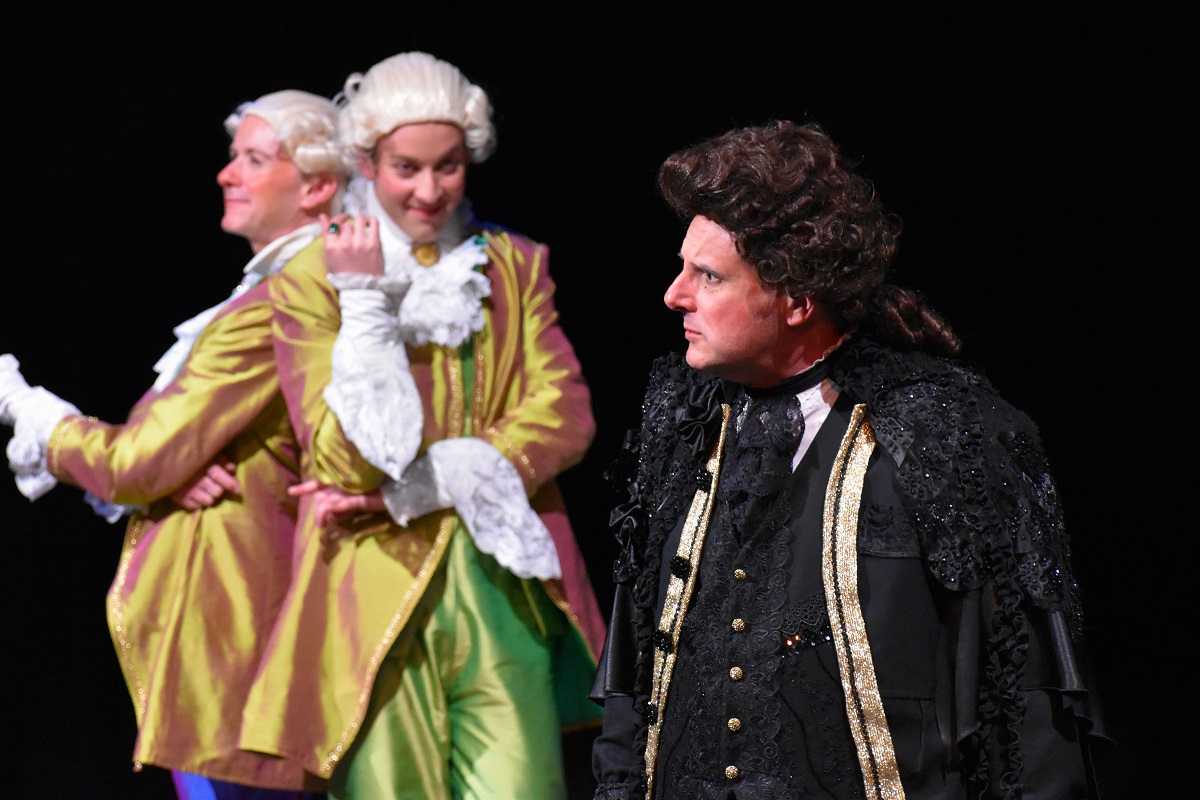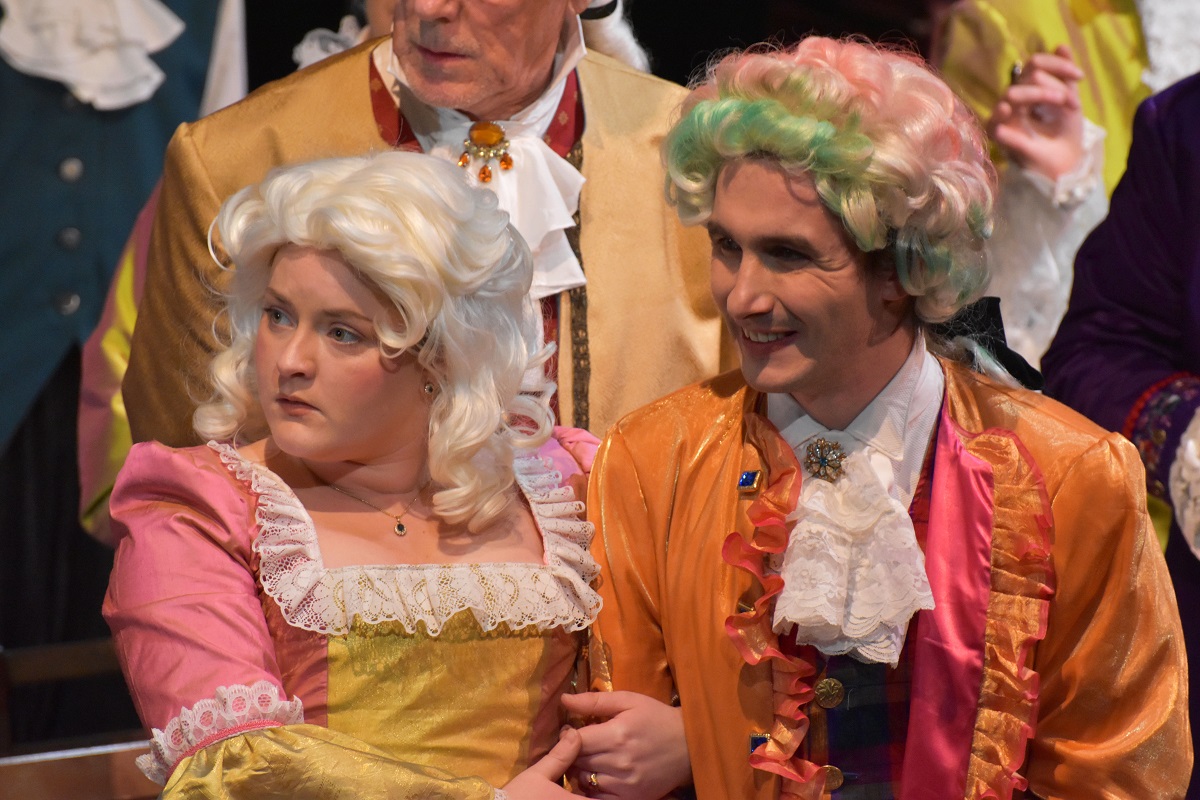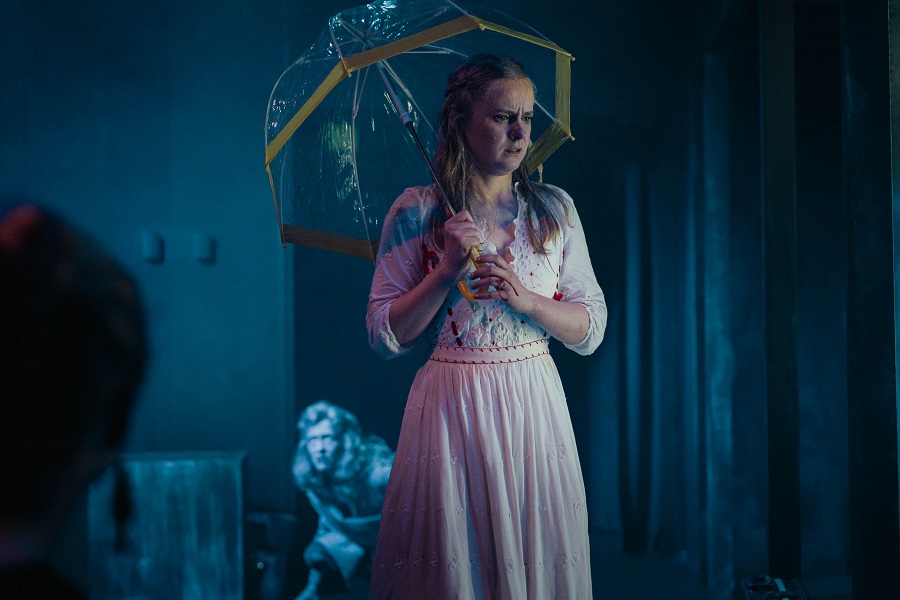
Theatre / “Amadeus” by Peter Shaffer, directed by Cate Clelland. At Canberra Rep Theatre, until August 12. Reviewed by SIMONE PENKETHMAN.
CANBERRA Rep’s “Amadeus” is a lush production with a large cast of 16 lavishly-costumed players.
The story revolves around three main characters: the former child prodigy, Wolfgang Amadeus Mozart (Jack Shanahan), his wife Constanze Weber (Sienna Curnow), and the obsessively jealous court-composer, Antonio Salieri (Jim Adamik).
The play opens with Salieri as an old man invoking an audience for his dying-man’s confession.
He claims to have carried out a personal vendetta against God for endowing Mozart with greater gifts than his own. He sabotaged Mozart’s career and possibly even killed him.
Salieri is a huge role and Adamink’s solid gravitas underpins the show. His voice work is a highlight, ranging from quiet, confessional tones to passionate rage, while always being audible and never assaulting our ears.
But the stage really comes alive with the brilliantly cast couple: Mozart and Constanze. Shanahan and Curnow’s lively chemistry injects a sense of chaos and excitement into every scene in which they appear, especially in the first half of the show.
Two Venticilli (Michael J Smith, Justice-Noah Malfitano) are comic narrators, providing another colourful and energetic contrast to the dour, conservative Salieri.
Director and set designer, Cate Clelland makes full use of this beloved, local theatre’s deep stage to evoke a sense of 18th century Viennese grandeur and excess.

After the lively first half, the play descends into a dark and turgid downward spiral. We see more of Salieri and far less of the Venticilli.
Mozart struggles against poverty and rejection. He resorts to composing for a suburban music hall and in so doing produces one of his most famous operas, “The Magic Flute”.
A scene depicting “The Magic Flute’s” premiere is a highlight, with the large cast playing a more raucous, working-class audience than those we see in act one.
Overall the second half seems repetitive and way too long. Salieri delivers monologue after monologue but never seems to move beyond his initial indignation with both God and Mozart.
Stories of child prodigies rarely have happy endings. As consumers of arts, we still struggle to reconcile artistic genius with the flawed characters of humans. The themes in this 1979 play remain relevant today.
Who can be trusted?
In a world of spin and confusion, there’s never been a more important time to support independent journalism in Canberra.
If you trust our work online and want to enforce the power of independent voices, I invite you to make a small contribution.
Every dollar of support is invested back into our journalism to help keep citynews.com.au strong and free.
Thank you,
Ian Meikle, editor




Leave a Reply